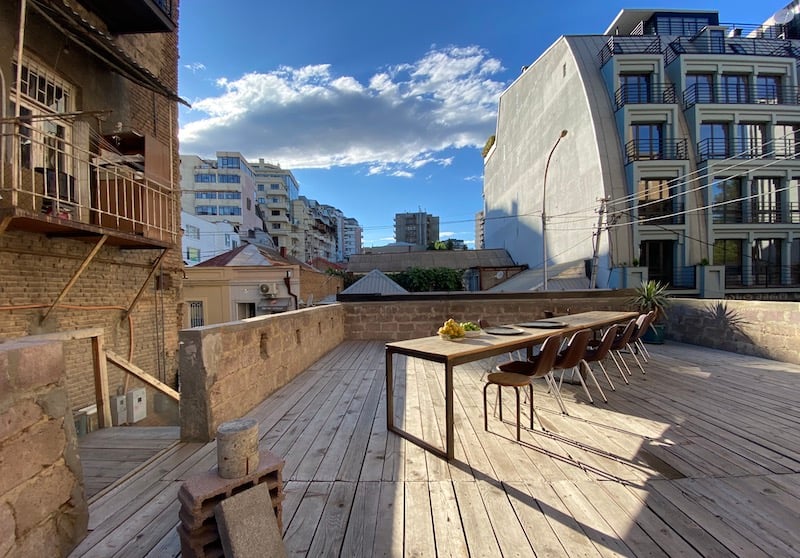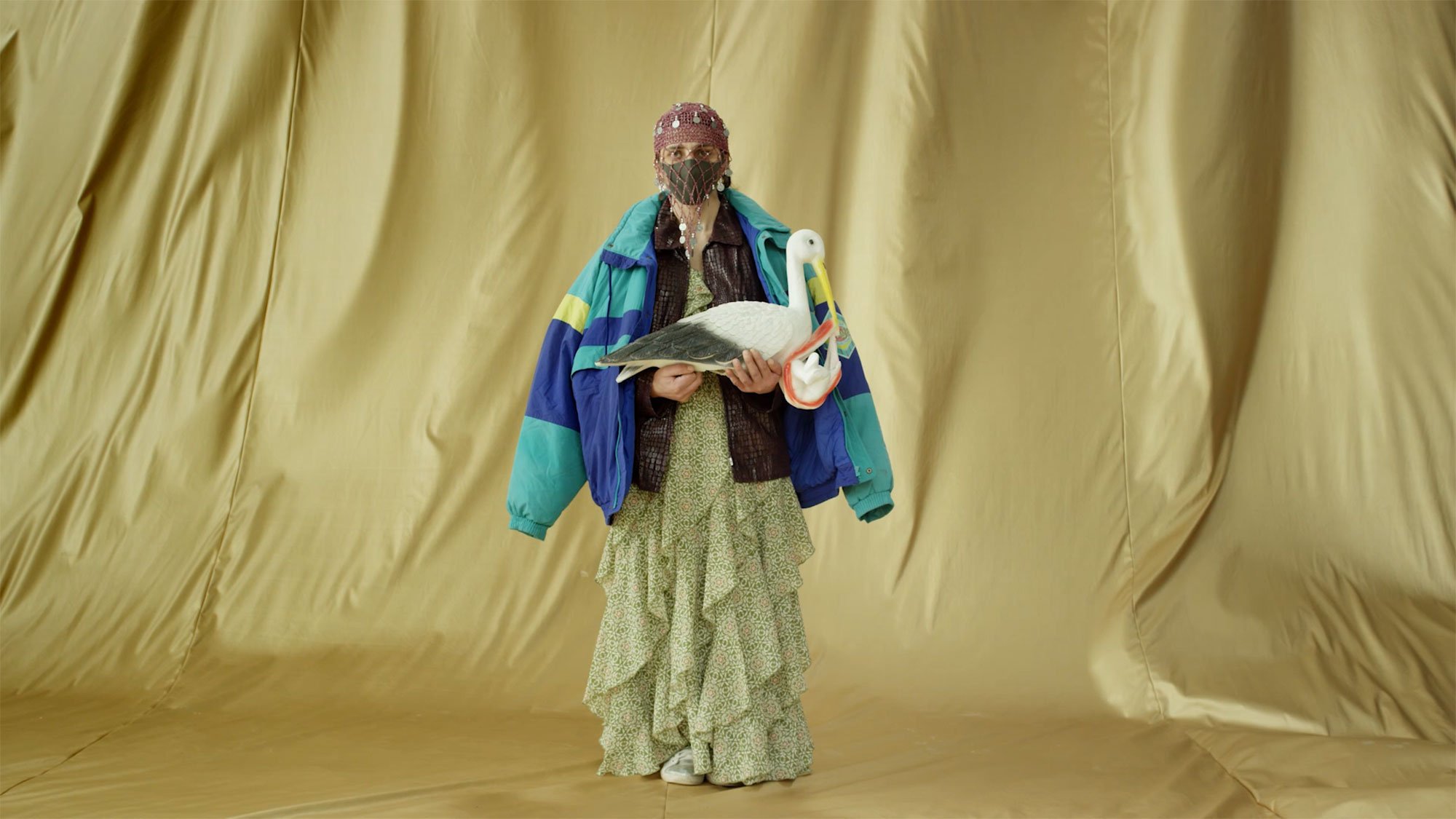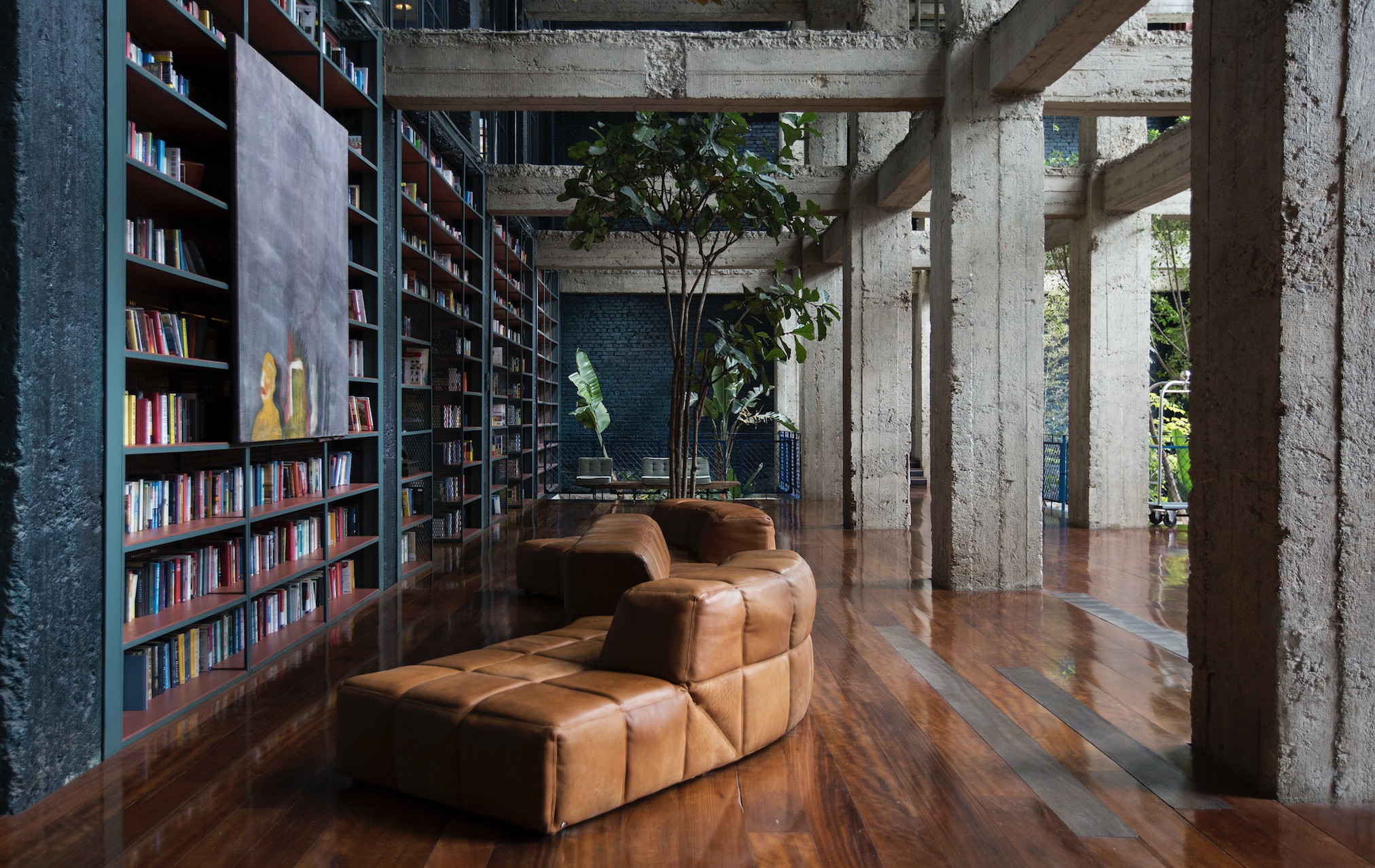Georgian architect David Brodsky is reclaiming the informal gathering spots where Tbilisi comes to life

Tbilisi, Georgia’s charming, crumbling, instantly-Instagrammable capital, has been through a lot in the last 30 years. In the historic centre, where dilapidated art nouveau streets meet Stalinist baroque, developers are squeezing concrete condominiums into every vacant lot; in the suburbs, the roadsides are bulging with petrol stations, kebab houses, and peri-urban arcana. Meanwhile, the city’s hulking lines of Brezhnev era apartment blocks, neglected for decades by the authorities, are festooned with informal extensions. Balconies and loggias, sometimes with multiple floors, cover the concrete like barnacles on the underside of a boat.
But hidden in the pandemonium of Tbilisi’s free-for-all development death spiral, there is what young Georgian architect David Brodsky likes to call “resistance”. There are gaps: lacunae where yet another apartment complex-cum-Martian penal colony simply won’t fit. There are informal spaces, places to sit and play dominoes, to drink or to shelter from the sun, erected by locals in the absence of government amenities. Then there are Budkas, makeshift corner shops occupying basements, cabins and any lockable structure, providing beer and cigarettes to communities long unserved by the modern world of retail. They provide jobs and sociability where such things are often lacking.
In these spaces of resistance, Brodsky is trying to reclaim tiny pockets of public space from the speculator’s maw, celebrate the informal, and repurpose the legacy of the Soviet and post-Soviet Tbilisi.
“I am interested in how ordinary people occupy spaces,” says Brodsky. “In the 90s, people constructed these Budkas and occupied them. They occupied space and then constructed something.” For Brodsky, it is this act of occupation, of repurposing in order to survive, that signifies resistance to the chaos that engulfed Tbilisi in the years following the fall of the USSR — years in which the city turned from a showpiece capital of a Soviet Republic into a dangerous, poverty-stricken zone of urban degeneration. “What is interesting is this act to occupy, to survive, this act was some kind of manifestation, some kind of resistance on the part of ordinary people.”
All of these acts sprung forth from the “informal” use of urban space — a non-sanctioned balcony here, a self-organised street market there — and it is these informalities that interest Brodsky. Returning to his native city after studying and working as an architect in Venice, his first project was to “informalise” the front room of his flat, turning it into a clubhouse for the first Tbilisi Architecture Biennial since the fall of communism (happily, the theme of the biennial was informal architecture).
The interior and exterior of David Brodsky's informal gathering place for the Tbilisi Architecture Biennale, Boiler
Mixing public and private, indoor and outdoor space in a nod to the traditional courtyard architecture of Old Tbilisi, Brodsky erected a vertiginous wooden staircase leading from the street straight into his bedroom window. For the two weeks of the biennial, his home became “Boiler”, a social condenser/after party venue open to everyone (“people, dogs, cats”), 24 hours a day. “A lot of people came, a lot of people stayed for a whole day or more, and we drank a lot of wine and had a lot of fun,” he says. “This was the first project dedicated to informality and to public and private space. Public and private space and what we can do with them together.”
Following the success of Boiler, Brodsky and friends Furqat Palvan-zade and Timur Akhmetov opened a non-profit venue called, in a nod to the 1990s, Budka. Repurposing a single storey khinkali restaurant, a semi-legal structure that had been abandoned for more than a decade, Brodsky stripped the building back to its steel and concrete bones. The result is an informal but elegant space, with a terrace which replaced the building’s old tin roof. It is accessed by one of Brodsky’s trademark staircases.
Georgians gather on the rooftop of Budka.
Budka provides an alternative space that hosts film screenings, performances and food residencies. “It is not a real bar, it is not a real cafe, it’s not a real art gallery — it is kind of a hybrid. And it’s a Budka, because it is self-organised, and also because we are trying to survive, trying to create a space to share the simple pleasures of life.” Sitting on the roof terrace with brand new speculative condominiums looming over you, the building’s precarious position is palpable; it too could be swept away in a tide of concrete. A few 19th-century courtyard houses stand close by, but only because they enjoy a thin, easily-ignored veneer of legal protection. Budka does not enjoy even that. It only emphasises the sense that the bar is an outpost of resistance against the tide of all-consuming, all-homogenising “redevelopment”.
But it is at Shakhta, his third major project and a coproduction with Tbilisi community radio that was born out of the Perfomance Days Tbilisi, that Brodsky’s ideas of the interplay between informal architectural repurposing of urban space, and architectural resistance come most sharply into focus.
Shakhta occupies a tiny sliver of land right next to the Mtkvari river in Tbilisi’s city centre, with a disused power station on one side — an Art Nouveau marvel soon to become a gentrified bar and café destination — and a patch of trees on the other. Subterranean tunnels that once connected the power station to the grid have made any development on the surface impossible — but not for Brodsky.
Partygoers at Shakhta. A DJ booth is inside the structure, which has a small platform placed on top
Shakhta, which means mineshaft, is defined by a four by five metre concrete box, (“Like a sculpture”, Brodsky remarks, “or a mushroom”). Inside is a shaft descending to one of the disused tunnels. The site was an island of public land in a sea of privatised assets. “On one side was the privatised power station, a huge territory. The other side had also been privatised, and here, this rectangle, was an urban void.”
With help from the Tbilisi Architecture Biennial he received permission to use the space from the authorities. Brodsky set about changing the void into a newly-repurposed public space, “exploring the bridge from private territory into public territory”, as he had done at Boiler. Clearing the shaft of 50 years of accumulated dirt and rubbish, he erected a large wooden platform on top with an open space looking down into the concrete box below. Initially hosting experimental music events with Tbilisi Community Radio, with invited acts in the shaft playing — literally underground — to revellers on the platform, Shakhta has gone on to host jumble sales and experimental sessions, and Brodsky plans to have a community radio programme broadcast from the shaft.
Since then, Brodsky and a group of architecture students from Tbilisi’s Free University have been scouring the cadastral map, searching for more lacunae, more voids to repurpose and put to public use. “I want to find them,” he says. “Urban voids that are interesting for interventions. Someplace that you know that no one has an interest there, no private owner or municipality. Somewhere no one will come and tell you to go away.”


